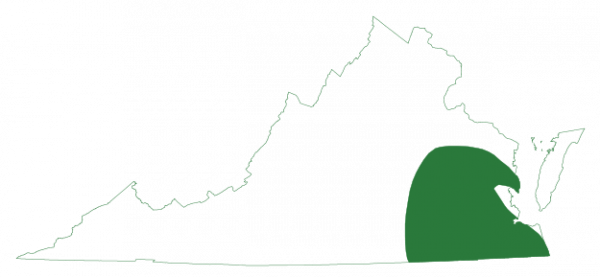Fact File
Scientific Name: Hyla femoralis
Classification: Amphibian
Size: Up to 1.5 inches
Identifying Characteristics
This small frog is commonly deep reddish brown in color but may be gray or greenish gray. There are distinctive grayish white, orange or yellow spots on the inner thighs that can only be seen by extending the hind legs (bottom photo). The blotchy markings on the back are variable, but do not form an ‘X’ that is characteristic of Spring Peepers. Like some other species of frogs, Pine Woods Treefrogs can quickly change color and pattern.
Distribution:
This Coastal Plain species occupies pine flatwoods, and mixed pine-hardwood habitats in southeastern Virginia. They may be found high in trees, in shrubs, and occasionally on the ground.

Did You Know?
This is a highly arboreal species and has been known to climb 30 feet into the canopy of a tree.
Role in the Web of Life
This species breeds from April-September in shallow grassy pools, roadside ditches, cypress ponds, Carolina bays, flooded forests, and swamps. Their advertisement call is a series of low pitched dots and dashes that sound like Morse code.
Conservation
Species appears to be secure in Virginia.
Last updated: August 14, 2024
The Virginia Department of Wildlife Resources Species Profile Database serves as a repository of information for Virginia’s fish and wildlife species. The database is managed and curated by the Wildlife Information and Environmental Services (WIES) program. Species profile data, distribution information, and photography is generated by the Virginia Department of Wildlife Resources, State and Federal agencies, Collection Permittees, and other trusted partners. This product is not suitable for legal, engineering, or surveying use. The Virginia Department of Wildlife Resources does not accept responsibility for any missing data, inaccuracies, or other errors which may exist. In accordance with the terms of service for this product, you agree to this disclaimer.

